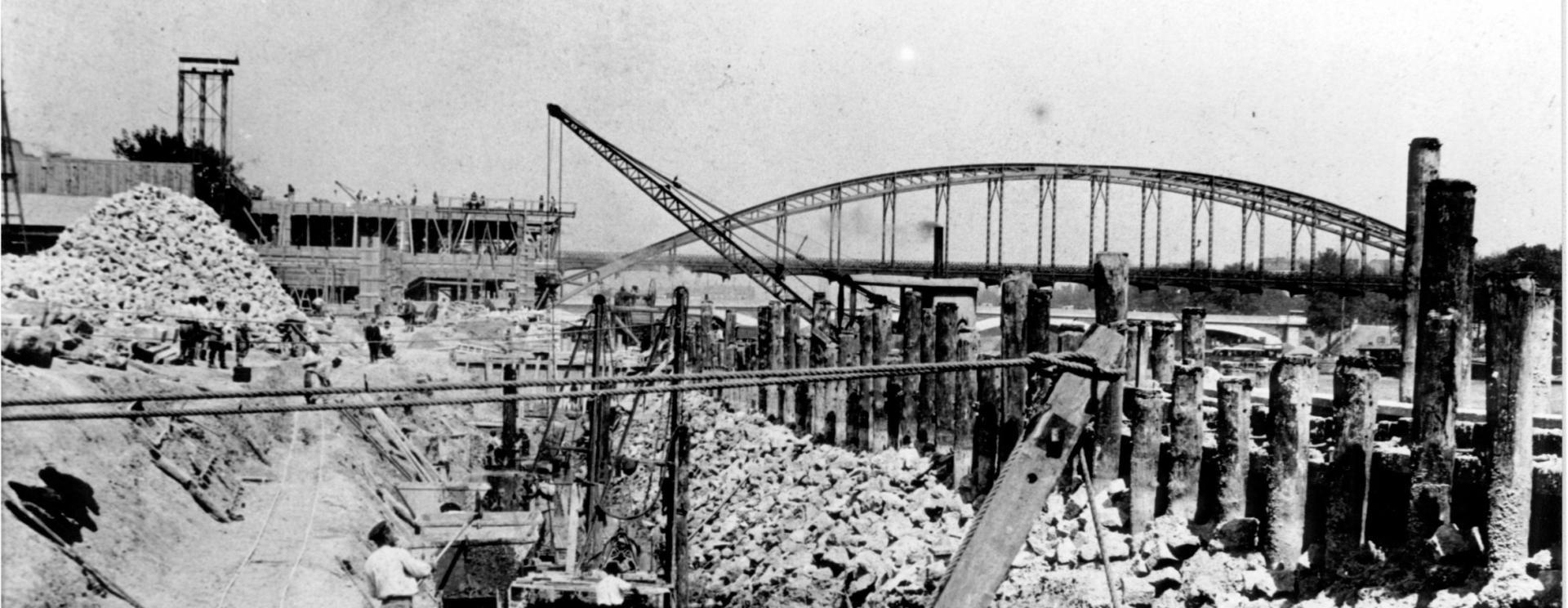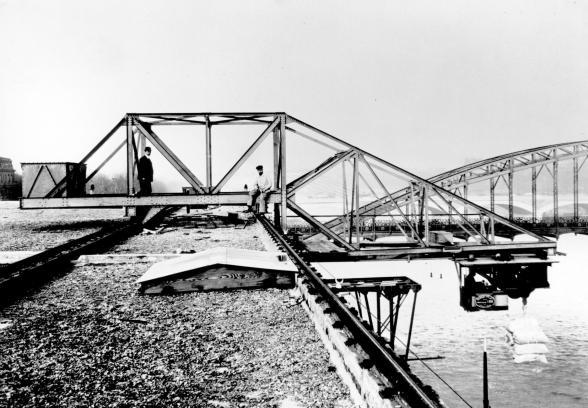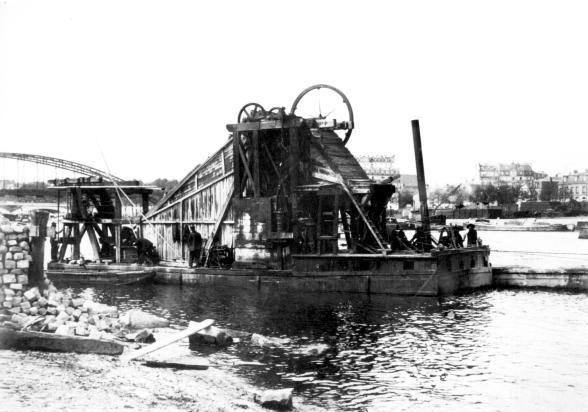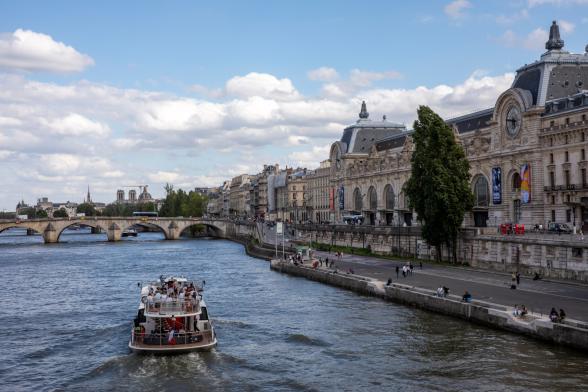- ABOUT US
- CARGO
- A multi-sector focus
- A maritime service offering in the first rank
- An attractive multimodal offering
- An expanded short sea service offering
- Port terminals and shared-use quays
- High-quality ship services
- Fluid, facilitated goods throughput
- A port that puts its performance figures in the public domain
- PASSENGERS
- MULTIMODALITY
- ECOLOGICAL TRANSITION
- INNOVATION

History of the ports of Paris
Published on - Updated
From Lutetia to Paris
Around 250 BCE the Parisiis, a Gallic tribe, establishes itself and begins to control traffic on the Seine.
52 BCE: Lutetia is born. The two branches of the river encircling the Ile de la Cité are joined by two wooden bridges, the Petit-Pont to the south and the Grand-Pont to the north.
- 300 CE: Lutetia becomes Paris.
The ports of Paris in the Middle Ages
- 12th century: a location on the Ile de la Cité is designated as the port of Notre-Dame (now better known as Saint-Landry port).
- 1141: development of the port de Grève.
- 1170: King Louis the Young grants a monopoly on Seine river transport between Mantes and Paris to the Hanse of the Water Merchants.
- 1270: creation of Louvre port (now better known as Saint-Nicolas port).
- From 1270 to 1389: construction of Tournelle and Grenelle ports.
The ports of Paris in the 16th to 18th centuries
The 16th century brings radical change as horizons widen with the discovery of the New World. Industry begins to develop. François I creates the port of Le Havre in 1517 and encourages maritime commerce.
1500: Formation of an upstream river basin and a downstream river basin each with associated construction works.
In the 17th century the ports of Conti Quay and the Invalides are constructed. In a text dated 1634 there is mention for the first time of a location at Javel where craft can be beached.
1720: Louis XIV authorises the creation of Gros Caillou port.
1800: Napoléon decides to create a port at La Villette with water coming from the Ourq Canal and to open a canal to Saint-Denis and Pontoise. At the same time the construction of the Seine quays intensifies.
- 1893: Mirabeau bridge is constructed, dividing Javel port into two: Upper Javel upstream and Lower Javel downstream.
The ports of Paris from the 19th century to the present day
1879: a river transport masterplan is promoted by Charles de Salses de Freycinet. Over a period of 20 years, work is continuous on the river to deepen and widen its navigation channels.
1899: inauguration of Ivry port.
1905: the port aux Cygnes is renamed Bourdonnais port.
1910: continuous rain causes the Great Flood of 1910.
After the 1910 Paris flood, a committee is set up to consider plans for a new port downstream from Paris: Gennevilliers. It is only after the Second World War that basins 1, 2 and 6 (1946) enter service. Basin 5 is officially opened in 1955.
During the First World War, developments are ongoing to ensure continuity of supplies. Work is carried out to connect all the ports to the rail network and a port is created at Bonneuil (1915).
1912: creation of the National Navigation Office (ONN) later renamed the National Waterways Authority (VNF).
1956: the Bateaux Parisiens line is formed.
1970: creation of Paris Port Authority and inclusion of Bonneuil port within the remit of the Authority.
1971: work begins on the creation of Évry port.
1974: creation of Paris Terminal as an Economic Interest Grouping at Gennevilliers port. In 1979 the first 25 containers are unloaded there after arriving from Le Havre.
1975: Initial acquisition of 18 hectares by Paris Port Authority on a site 40km to the north of Paris: creation of Bruyères-sur-Oise port.
- The 1980s: creation of Limay-Porcheville port.
- 1994: launch of a weekly container transport service between Le Havre and Gennevilliers by Logiseine, a logistics firm.
- 1995: the Paris Terminal Economic Interest Grouping is renamed Paris-Terminal SA.
- 1996: Gennevilliers becomes home to Grands Moulins de Paris.
- 2012: creation of HAROPA as an Economic Interest Grouping comprising the ports of Le Havre, Rouen and Paris.
- 1 June 2021: creation of HAROPA PORT.


